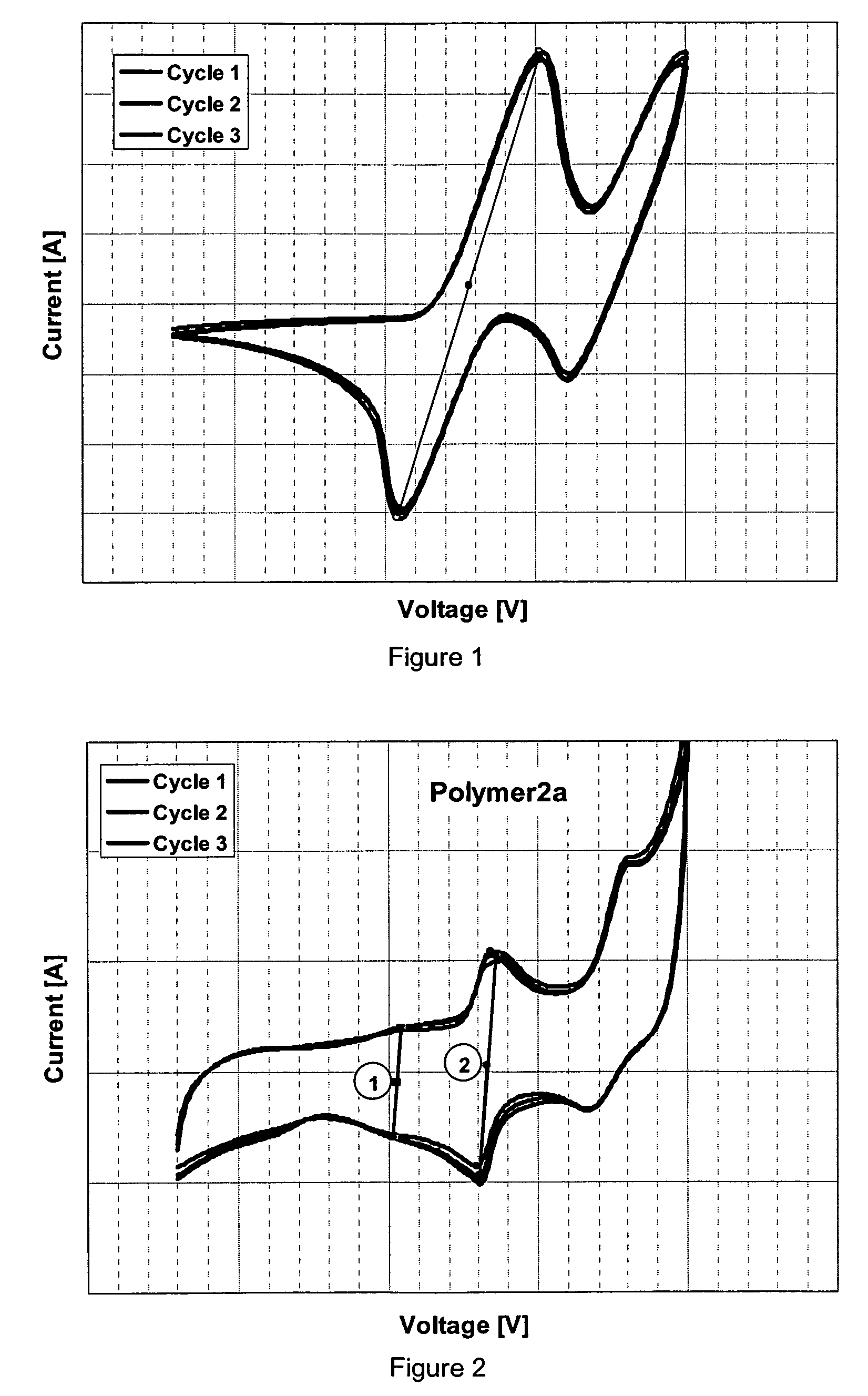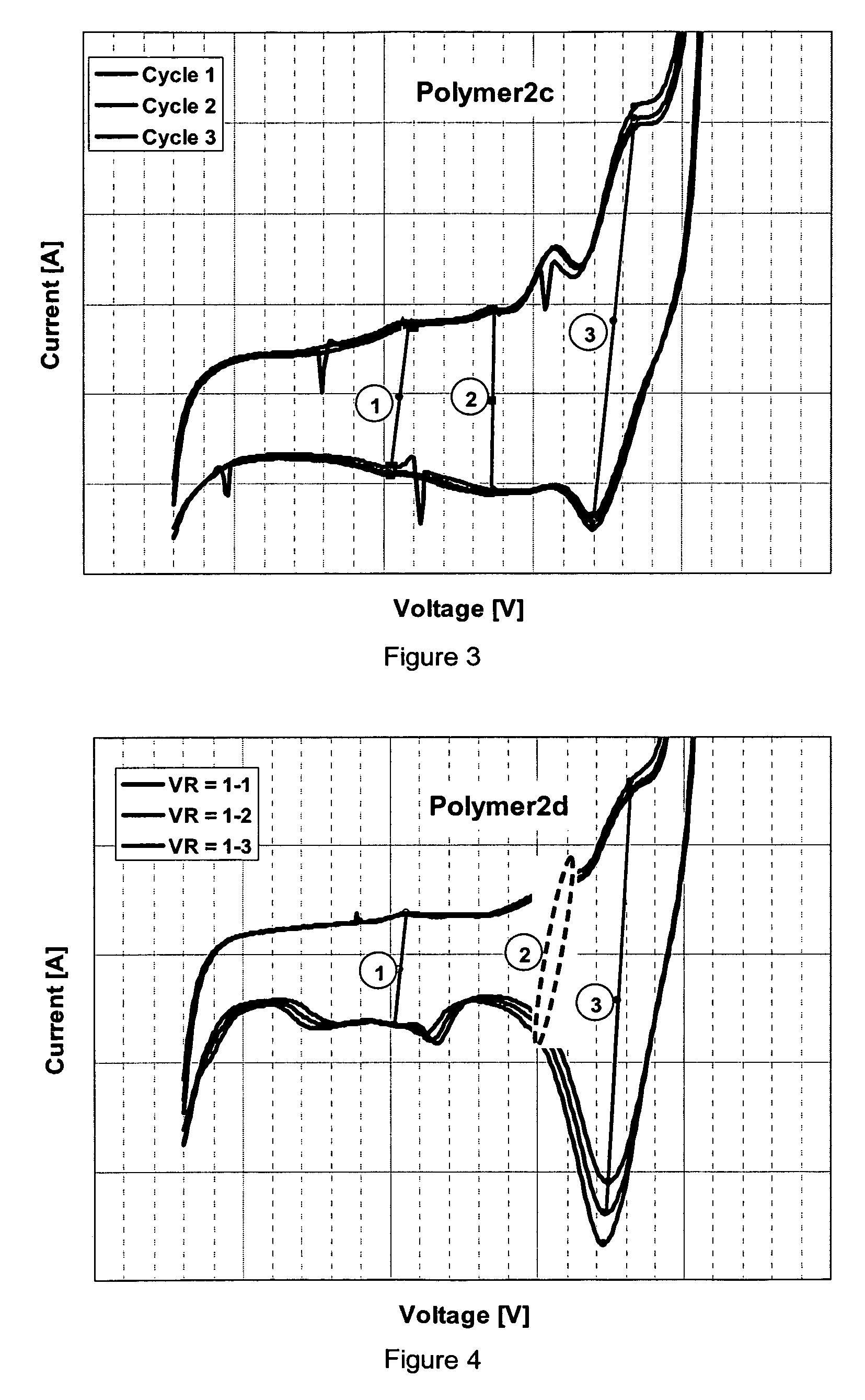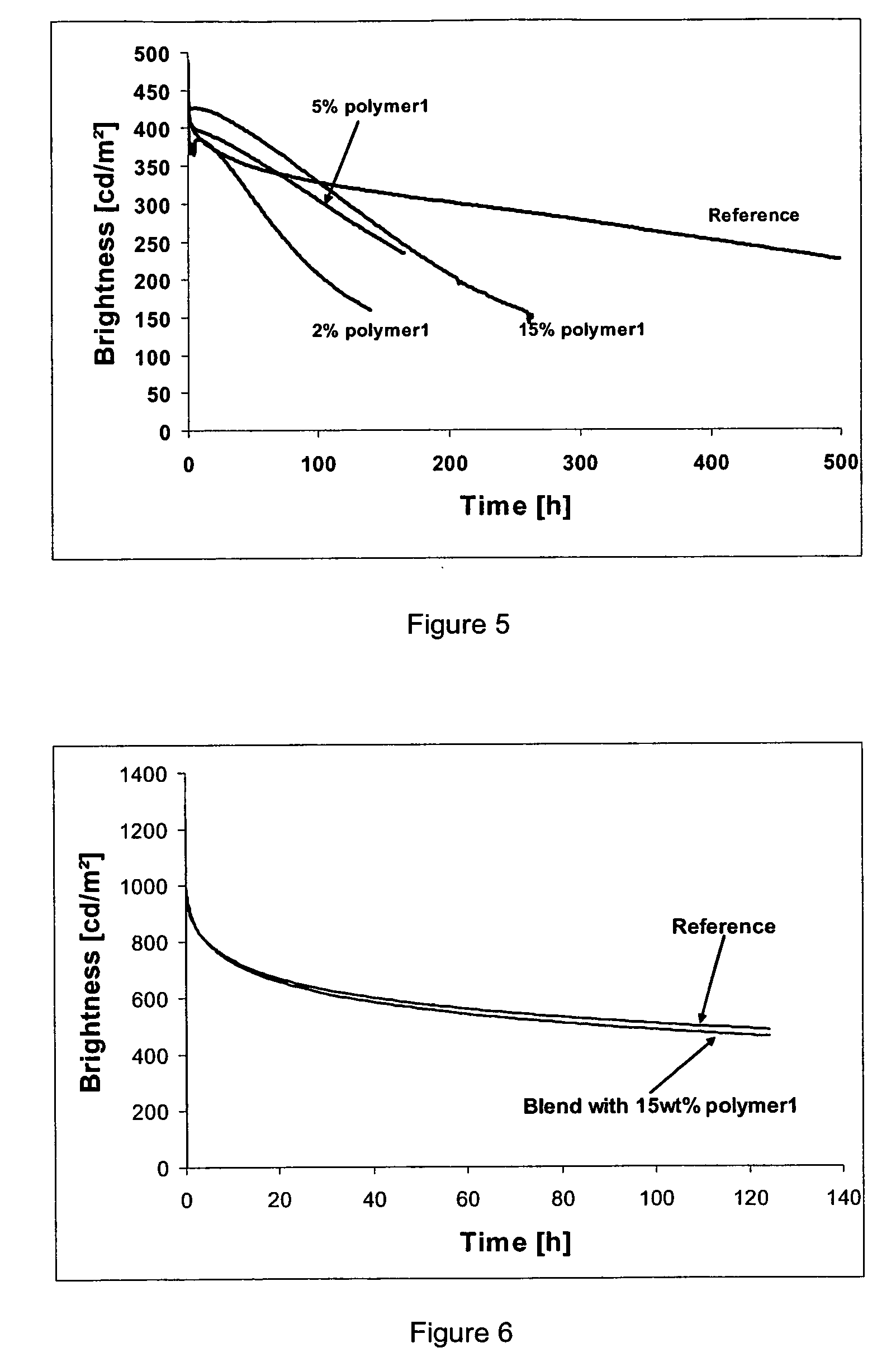Polymer blends and their use in organic light emitting devices
a technology of organic light emitting devices and polymer blends, which is applied in the manufacture of final products, discharge tubes/lamp details, synthetic resin layered products, etc., can solve the problems of poor lifetime, inability to manufacture additional interlayers, and inability to meet the requirements of mass production,
- Summary
- Abstract
- Description
- Claims
- Application Information
AI Technical Summary
Benefits of technology
Problems solved by technology
Method used
Image
Examples
example 1
Polymers
[0320]The following polymers are synthesized by Suzuki coupling as disclosed in WO03 / 048225.
[0321]Polymer1 is the copolymer of following monomers:
[0322]Polymer2a is the copolymer of following monomers:
[0323]Polymer2b is the copolymer of following monomers:
[0324]Polymer2c is the copolymer of following monomers:
[0325]Polymer2d is the copolymer of following monomers:
example 2
Cyclovoltammetry Measurement on the Polymers
[0326]The HOMO levels of the above polymers are measured by cyclovoltammetry (CV). The CV measurements are conducted in dichlormethane solution using tetrabutylammonium chloride as conducting salt, Ag / AgCl / KCl (3 mol / l) as reference electrode, Au as working electrode and Pt as counter electrode. FIG. 1, FIG. 2, FIG. 3 and FIG. 4 are the CV curves for poylmer1, polymer2a, polymer2c and polymer2d. 3 cycles were measured for every polymer. The HOMO levels were calculated by the average voltage of the local maximum peak in oxidation-curve and corresponding local minimum peak reduction-curve. Care should be taken to find the correct local minima and maxima, for example change the axis case to find all peaks. The results are summarised in Table 1, with the alignments of the different function groups to the corresponding peaks.
[0327]For polymer1, polymer2a and polymer2c, all peaks are very clearly spotted. All there cycles give essentially the sa...
example 3
Quantum Simulation on Energy Levels of the Polymers
[0328]As mentioned before, the applicants established a very reliable quantum simulation method to determine the energy levels of organic materials. The HOMO and LUMO levels of individual units are calculated by Gaussian 03W using the DFT method. In the calculation, the trimer M2-M1-M2 is taken as hole transport unit in polymer1; M4-M3-M4 as electron transport unit and M4-M5-M4 as both exciton formation and emissive unit in polymer2a; M6-M3-M6 as electron transport unit and M6-M5-M6 as both exciton formation and emissive unit in polymer2b; M6-M3-M6 as electron transport unit, M6-M5-M6 as exciton formation unit and M6-M7-M6 as emissive unit in polymer2c; M6-M3-M6 as electron transport unit, M6-M5-M6 as exciton formation unit and M6-M8-M6 as emissive unit in polymer2d.
[0329]The CV measured and DFT calculated energy levels for the different function units in the polymers are shown in Table 2. It should be pointed out that the LUMO valu...
PUM
| Property | Measurement | Unit |
|---|---|---|
| HOMO | aaaaa | aaaaa |
| HOMO | aaaaa | aaaaa |
| HOMO | aaaaa | aaaaa |
Abstract
Description
Claims
Application Information
 Login to View More
Login to View More - R&D
- Intellectual Property
- Life Sciences
- Materials
- Tech Scout
- Unparalleled Data Quality
- Higher Quality Content
- 60% Fewer Hallucinations
Browse by: Latest US Patents, China's latest patents, Technical Efficacy Thesaurus, Application Domain, Technology Topic, Popular Technical Reports.
© 2025 PatSnap. All rights reserved.Legal|Privacy policy|Modern Slavery Act Transparency Statement|Sitemap|About US| Contact US: help@patsnap.com



